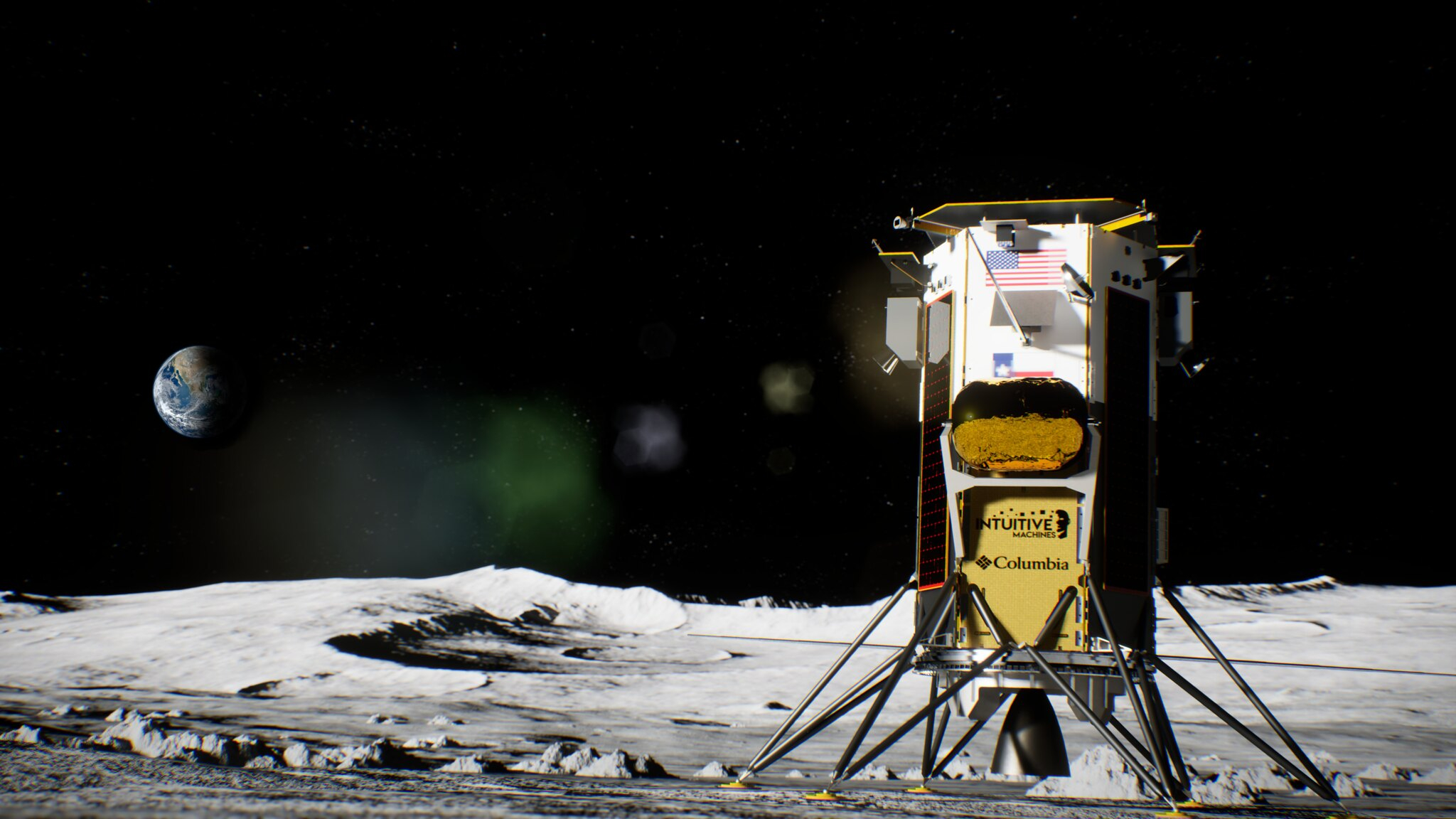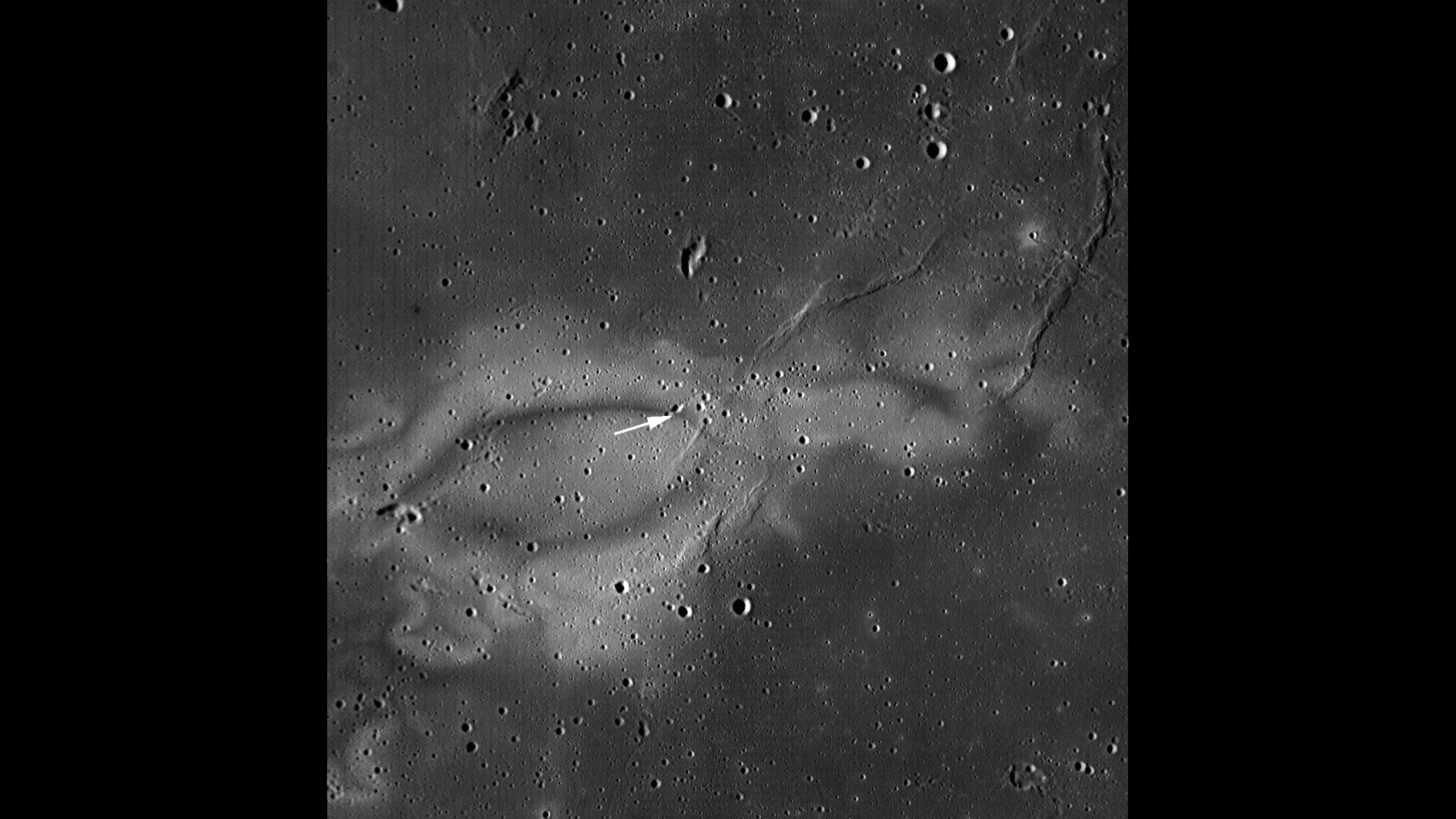Intuitive Machines rings Nasdaq bell on path to private moon landing
The moon-landing company went public on the Nasdaq on Wednesday (Feb. 15) amid a renewed focus by NASA to bring humans and robots to the lunar surface.

The night before taking their moon company public, Intuitive Machines personnel attended the Broadway musical "Hamilton" in New York City, which in part portrays the origins of the United States.
"The theme of the whole thing is, "You got to take your shot. Don't miss a shot." To everybody, it felt like this is our shot," Intuitive Machines communications director Joshua Marshall told Space.com Wednesday (Feb. 15), shortly after his company rang the opening bell of the Nasdaq stock exchange that morning.
Intuitive Machines may be the first U.S. private venture to touch down on the moon. The debut mission, IM-1, will launch on a SpaceX Falcon 9 for the south pole of the moon in June or so, ahead of astronaut landings as soon as 2025 from the NASA-led Artemis program. (Astrobotic's Peregine lander is also expected to launch in the first half of 2023, among other companies with near-future launches.)
The moon is rich in water ice and as such, Intuitive Machine's Nova-C lander will serve as a pathfinder for NASA missions. There is far more moon activity forthcoming, and the money raised from today's Nasdaq listing will allow the company to build out infrastructure to support the Artemis astronauts, Marshall said.
Related: Intuitive Machines now targeting moon's south pole for delayed lunar landing mission
Houston-based Intuitive Machines was founded in 2013 and has seen a lot of growth since then. It began as just half a dozen people striving to find their niche, with as many as 24 business lines in aerospace and engineering—like drones for inspecting pipelines, for example.
The original group of Intuitive Machines employees, however, came from NASA's human spaceflight programs and engineering at Houston's Johnson Space Center, where astronaut training is centered. After five years "bouncing around," NASA's shift to prioritize lunar exploration in 2018 gave Intuitive Machines a focus and business case in an area in which they already had expertise, Marshall said.
Breaking space news, the latest updates on rocket launches, skywatching events and more!
With renewed focus came propulsive growth: The company now stands at 250 employees and expects to add at least 120 more personnel in 2023 alone. Three moon missions are already on the manifest. Slightly further in the future will be communications satellites and larger landers for future Artemis missions, which the Nasdaq listing will help fund.
Intuitive Machines (@Nasdaq: LUNR) is ringing the opening bell in New York. Our live stream: https://t.co/MvAhFNRnKQFebruary 15, 2023
The IM-1 mission will land five NASA science experiments on behalf of NASA's Commercial Lunar Payload Services program, which aims to send scientific payloads and experiments to the moon on private hardware.
The south pole region was a relatively last-minute shift in the planning, requiring the Nova-C lander to be modified for different solar angles and temperatures compared to the hotter and more sunlit lunar equator. Testing shows the solar panels have been optimized, and the lander should be ready for its jaunt on a ride of Malapert A, a crater near the south pole, Marshall said.
A second mission, IM-2, will launch the Polar Resources Ice Mining Experiment (PRIME-1) NASA gear and a lunar "hopper" to the south pole as soon as Oct. 31. The Nova-C lander will ride there aboard another Falcon 9 rocket, targeting a ridge of Shackleton Crater at the south pole.
The IM-2 NASA package includes a trident drill to burrow as deep as three feet (one meter) into the surface. Any tailings will be examined for composition using a mass spectrometer, in the longstanding search for water under the soil.
Meanwhile, the Arizona State University-Intuitive Machines hopper will measure the temperature at the bottom of deep craters (where water might reside) and "put light on the bottom of a crater that's never seen sunlight, ever in the history of the moon", Marshall said.
Related: Water on the moon is present even outside of dark craters, study confirms
The third booked mission so far, set for April 2024, will see an Intuitive Machines lander bring four investigations to Reiner Gamma in Oceanus Procellarum, which hosts a bizarre magnetic "lunar swirl" tens of miles or kilometers across.
A group of rovers will swarm away from the lander and drive around the swirl, Marshall said, testing out new rover-to-rover communications technology that will assist any stranded machines with navigation should a rover get stuck along the way.
With these missions fully funded and more money coming in, Intuitive Machines next plans to build out new technology. The company is speaking with entities seeking to build a bigger lunar rover, the size of a Ford F-150 pickup truck with a mass of 1.6 tons (1.5 metric tons), according to Marshall.
More communication satellites will also be needed to support lunar missions, which is why Intuitive Machines plans to fly a few on its second and third missions and then to expand to a constellation of at least five machines. The satellites will allow for easier far-side communications and also serve as a small GPS-like network to pinpoint locations on the lunar surface.
Intuitive Machines is even examining far-future ideas like robotics for servicing satellites, or spacecraft that could precisely land payloads on Earth from NASA's planned Gateway space station orbiting the moon.
"We've built an entire lunar program; we've had to build every aspect," Marshall emphasized, which company officials hope will position Intuitive Machines for even more NASA work in the near future.
Elizabeth Howell is the co-author of "Why Am I Taller?" (ECW Press, 2022; with Canadian astronaut Dave Williams), a book about space medicine. Follow her on Twitter @howellspace. Follow us on Twitter @Spacedotcom or Facebook.

Elizabeth Howell (she/her), Ph.D., was a staff writer in the spaceflight channel between 2022 and 2024 specializing in Canadian space news. She was contributing writer for Space.com for 10 years from 2012 to 2024. Elizabeth's reporting includes multiple exclusives with the White House, leading world coverage about a lost-and-found space tomato on the International Space Station, witnessing five human spaceflight launches on two continents, flying parabolic, working inside a spacesuit, and participating in a simulated Mars mission. Her latest book, "Why Am I Taller?" (ECW Press, 2022) is co-written with astronaut Dave Williams.

